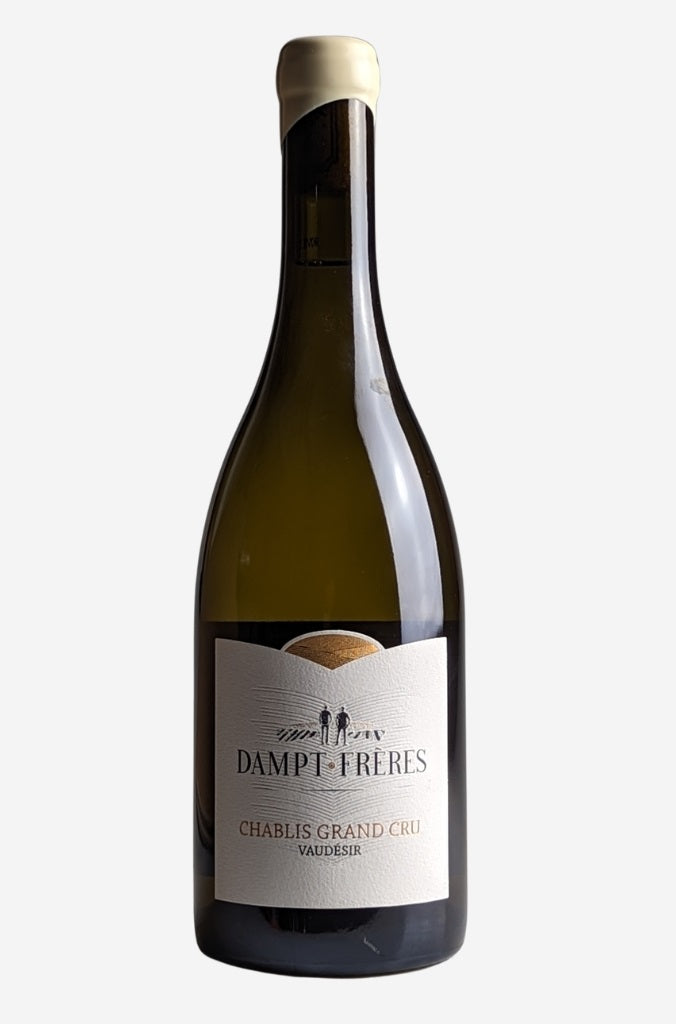Burgundy Wine - Buying Guide

Burgundy with its many vineyards, villages and appellation systems, split among numerous land owners and wine growers, provides a complicated region to grasp. Great Burgundy wine can be red, made with Pinot Noir, and white which tend to be un-blended wines made from single grape varieties, mostly Chardonnay and occasionally Aligoté.
History and Production of Burgundy Wine
The region of Burgundy, also known as Bourgogne, has a rich and opulent history. In the fourteenth and fifteenth century, the Grand Duchy of Burgundy’s region reached as far as Belgium and up to the North Sea. Maximising on vineyards originally planted by the Romans, and much later cultivated by the monks of the middle ages, the region became known, not only known for its riches, opulence and artistically cultured ways, but for its wine.
The legacy of its wine production lives on to this day. Burgundy has some of the most expensive, sought after wines in the world, which is impressive for such a geographically small region. The region is known for its limestone soils- remnants of a sea from millions of years ago. The limestone affords the wines a particularly unique and appetising minerality which helps a wine taster to identify a Burgundy wine from its peers.
Burgundy Classifications and Appellations
The appellation structure of Burgundy can seem quite complicated, but simplified, there are four levels of appellations in Burgundy. The larger region “catch all'' appellation is ‘Bourgogne AOC’. This can cover all styles of wines. ‘Village AOCs’ are wines from a specific village.
Premier Cru wines are wines from a specific ‘climat’ (wine growing plot) of Burgundy. Finally, we have the best of the best, being ‘Grand Cru’ wines. These are wines from Burgundy’s best climats. The main wine growing regions of Burgundy (excluding Beaujolais) are Chablis, Côte d’Or (divided into Côte de Nuits and Côte de Beaune), Côte Chalonnaise and Maconnais.
Grand Cru

Grand Cru, meaning “Great Growth” are the best of the best wines in Burgundy and account for only 1% of the region's wine production. These sublime vineyards can only be found in sub regions of Côte d’Or and Chablis- 33 Grand Crus in total. Some of the best white wine Grand Cru vineyards are found in the stunning commune of Chablis or Côte de Beaune. Some of the best red wine Grand Crus are found in Côte de Nuits. For a stunning example of a Burgundy Grand Cru white wine, the Dampt Freres Chablis Grand Cru Vaudesir is delectably fresh and zesty, with a lingering minerality unique to the best terroirs of Burgundy.
Premier Cru

Accounting for around 15% of Burgundy wine production, Premier Cru wines, meaning “First Growth”, are wines of the second best climats (wine growing plots) in Burgundy. There are 640 Premier Cru climats in Burgundy. Some of the wines produced under this classification are some of the best in the world and an excellent option should one not wish to extend the budget to a Grand Cru wine. We are pleased to be able to offer a delightful, quintessential Burgundy Premier Cru red wine.
Our Monthelie: Domaine Dupont-Fahn 1er Cru Les Vignes Rondes carries all the fruity lusciousness to be expected from a Pinot Noir red wine. Soft red cherries on the palate, with smooth tannins makes this wine a delight to drink on its own or paired with delicate white meat dishes.
Village appellation wines (Blended wines)

Villages AOC wines are those wines from a specific village in Burgundy and are usually blends from across a number of vineyards within a village as opposed to from one vineyard. Villages of the Cotes de Nuits are particularly adept at making some delightfully, juicy red Pinot Noir wines.
Gevrey-Chambertin and Nuits-St-Georges being known for such. Dry white wines that are perfectly characterised by the Burgundy limestone terroir, can be found in the Village wines of Meursault and Puligny-Montrachet.
The wines from the village of Meursault offer a zesty lemon and lime palate, with complexity and depth from their refreshing acidity and lingering minerality.
Regional Appellation Wines
The catch all region of Bourgogne AOC offers some delightfully easy drinking wines that are enjoyable and still sometimes suitable for laying down, depending on the concentration of flavours.
The “halfway house” specific sub-regions (sous-régional), described as being a hybrid between the general region and the villages AOCs, such as ‘Bourgogne Hautes-Côte de Nuits’ (as opposed to its Village AOC counterpart Côte de Nuits-Village), should not be neglected.
They can often be perfectly enjoyable wines sometimes at the best value! At Pierre Hourlier Wines, we are pleased to be able to offer a fantastic regional wine that is noted to be one of those gems that, whilst not heralding from one of the higher classifications, is a delight.
Burgundy Grape Varieties

The key grape varieties in Burgundy are Pinot Noir for red wines and Chardonnay for white wines. As with many of France's wine producing regions, a select number of other grapes varietals can be permitted within wine growing, however key varietals are focused on, with other varietals forming auxiliary options should a crop need it, or play a very specific role in a singular village or commune.
Pinot Noir
The key grape variety used in Burgundy red wine is Pinot Noir, known to be difficult to grow in other parts of the world due to its thin skins, and yet thrives in Burgundy.
Chardonnay

Burgundy’s white wine main grape variety is Chardonnay. The incredibly versatile grape is now grown all around the world in a multitude of styles, but its fame is rooted in Burgundy. Burgundy white wines are entirely unique as a result of its famed limestone terroir and can be some of the most expensive wines in the world. The appellation of Pouilly Fuissé is famed for their superb dry, rich, full bodied white wines. A fine example of one can be sampled in the Giles Guerrin Vieilles Vignes.
The beautiful commune of Chablis have stunningly elegant, dry, lean white wines made from Chardonnay offering an entirely unique style of minerality. Some state that they can taste the kind of minerality found in oyster shells, thereby making the wines a perfect, luxurious pairing with delicate shell fish, oysters and caviar.
Aligoté
The zesty Aligoté white grape, whilst not as popular as the Chardonnay wines, is grown widely across Burgundy, particularly in Cote Chalonnaise. The village of Bouzeron almost exclusively grows Aligoté. Our 100% Aligoté wine from producer Domaine Geantet-Pansiot is a must should one wish to try a typical one - It offers a pleasantly sharp lemon zest palate, balanced with white floral notes and minerality.
Sauvignon Blanc
The appellation of Saint-Bris is the heart of 100% Sauvignon Blanc wine-making in Burgundy. At odds with the rest of Burgundy, which polarises on Chardonnay as its main grape varietal for white wines, Saint-Bris wines are also very unique in style. The wines are often much leaner than the Sauvignon Blanc wines heralded in Sancerre, offering the classic Sauvignon Blanc aromas, along with the unique aromas of crushed blackcurrant leaves, brambles and hedgerow.
Gamay
The Gamay red grape is King of the Beaujolais region which, whilst the region is technically part of Burgundy, the appellation has its very own individual fruity style compared to wines of the Burgundy appellations, as it can only use the Gamay grape.
The Gamay grape therefore plays a much lesser role in the Cote d’Or and wider Burgundy region. There are very few producers who do however grow the Gamay grape varietal outside of Beaujolais. Those in Cote D’Or produce a wine known as Bourgogne Passe-Tout-Grains. An appellation unto itself, Bourgogne Passe-Tout-Grains AOC wines can be in a rosé style or a simple red wine made up of a blend of the Pinot Noir and Gamay varietals.

Buy Burgundy Wine from Pierre Hourlier Wines
At Pierre Hourlier Wines, we have an exceptional range of some truly superb examples of Burgundy wines to buy, covering many of the key villages, along with Grand Cru and Premier Cru wines, from across the region.
Our wine producers have been carefully sought by us, dealing directly with the vineyards, and we have tasted, sourced and brought the wines to you, to be purchased either directly from our store or from our website.
Should you have any queries on picking a Burgundy wine- from a Grand Cru to a classic regional wine- or should you require a personal recommendation, please feel free to contact us and we would be delighted to share our expertise, discussing your tastes and requirements with you.
FAQ
What does Burgundy wine taste like?
There are five key wine growing regions in Burgundy, excluding Beaujolais. Chablis, Côte d’Or-divided into Côte de Nuits & Côte de Beaune- Côte Chalonnaise and Mâconnais. All are remarkable for the regions’ limestone terroir often giving the wines a stunning minerality that is most enjoyable. Chablis is known for its ‘no frills’, extremely sought after, elegant white wines that carry a lean minerality akin to the prehistoric Kimmeridgian limestone terroir. Unique and beautiful.
Cote de Nuits is known for their stunning 100% Pinot Noir red wines offering intense red fruit aromas and are light to medium bodied. Their Grand Cru examples are unrivalled and have more complex aromas and flavours. When aged, they can take on vegetal, leather aromas.
Cote de Beaune is known for their 100% Chardonnay white wines with a bolder, fuller style than those of Chablis, and also highly sought after.
Cote Chalonnaise does not have any Grand Cru vineyards however their production of Aligoté grape wines and the famed Crémant de Bourgogne (sparkling wine) should not be missed. The Domaine Matray Cuvée Cylia Brut offers the perfect, cost effective alternative to Champagne, made in the same traditional method as Champagne, with a delightful zesty palate minus the Champagne prices.
Mâconnais is the largest region, and offers a variety of styles however the peachy, white floral, zesty white wines are prized from the village of Pouilly-Fuissé.
How do I read Burgundy wine labels?
In Burgundy, the vineyard is King, and it is the vineyard rather than the producer that is classified accordingly. Simplified, if a wine in Burgundy is from a Premier Cru or Grand Cru vineyard, the label will indicate this.
Also included will be the wine producer name, often hyphenated with the Grand Cru vineyard name from which the wine heralds. The only exception to this is in Chablis which will always identify that it is from Chablis.
When a wine is from a Village AOC, the village will be indicated on the label, detailing the village appellation it heralds from. Regional wines will detail its regional appellation as ‘Bourgogne AOC’.
In all classifications, what will not always be clear, is the actual grape varietals used in the production of the wine. It is assumed that the buyer will simply know based on the appellations. A simple and easy starting point is that Burgundy wines are often mono cépage (single grape); Red Wines (aside from Beaujolais) will be Pinot Noir and their White Wines from Cote D’Or will be Chardonnay based, with very few specific appellation exceptions such as Saint-Bris which utilises Sauvignon Blanc.
Is Burgundy wine sweet?
Burgundy wines tend to be dry, with their red wine offering pronounced red fruit aromas and medium body, and their white wines ranging from light to full bodied with earthy minerality. However, many enjoy a sweet Kir made up of a Burgundy Aligoté or Sauvignon Blanc and a few teaspoons of cassis syrup which adds sweetness and serves as a delightful aperitif!
What food is best paired with Burgundy wine?
Some of the best Burgundy wines are known for their pronounced aromas and therefore any food needs to complement this rather than dampen the experience. A lighter, simpler Bourgogne AOC wine would be well suited to a selection of mild cheeses. Some of the more complex, pronounced, higher quality wines, such as Grand Cru Pinot Noir would be ideally paired with a mild mushroom risotto, duck in a simple cherry jus, or mildly umami game dishes would be delicious with the fruity notes of the wine remaining intact. Burgundy white wines are perfect when paired with a cheese board selection, their acidity cutting through the fat of the cheese to perfection, offering an exquisite experience.
What is the best Burgundy wine?
The best Burgundy wines are not necessarily the most powerful or complex in body, as you would expect when tasting a Bordeaux or Châteauneuf-du-Pape. The joy of Burgundy wines lies in their aromas, with much of the pleasure coming from the nose. Pinot Noir offers the best wines when at low yield, and the most enjoyable wines have intense, lingering, perfumed red fruit aromas; cherries, red plums and cranberries, whilst only being medium bodied in style.
Premier Cru and Grand Cru classified wines can often offer perfect examples of this lingering intensity, sought after in Burgundy wines.
An excellent, elegant, lean white Burgundy can be found in our Dampt Freres Chablis Grand Cru Vaudesir. This is not only a superb Burgundy wine offering the unique minerality of the Chablis soils, this was a fantastic year for Chablis, making it a great choice for an avid wine collector. For the Sparkling wine inclined, or those looking for the perfect aperitif, our Crémant De Bourgogne: Dampt Freres Brut is the ultimate, cost effective alternative to Champagne. Made in the traditional method akin to the wine of the Champagne region, made from 80% Pinot Noir and 20% Chardonnay, this sparkling wine offers delicacy and lightness with notes of lemon, cherry and strawberry.







